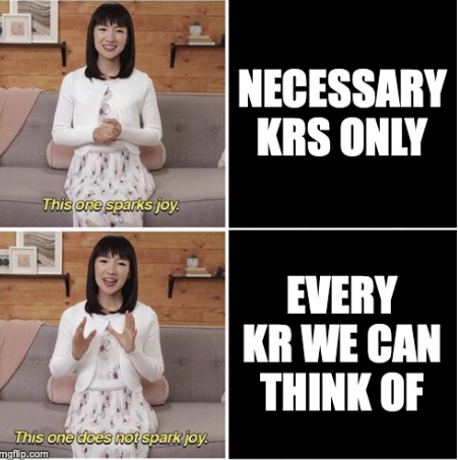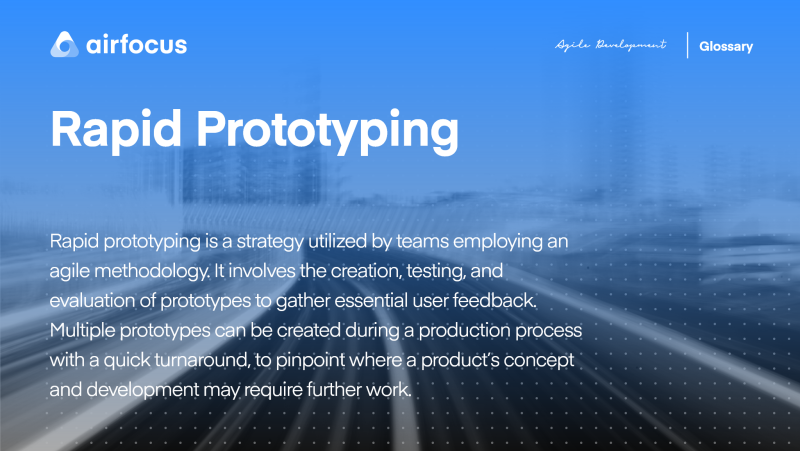
Everyone knows the “Fail Fast, Fail Often” slogan. With origins going back to Yoda (and before), it has since been popularized by Silicon Valley startups and lean business manuals. This philosophy promotes learning by doing — the implication being that you will never know everything upfront, so just get started already.

You will have some successes and make some mistakes. That is ok. The point is to learn from your mistakes, adapt and continuously improve.
For any product manager working in an Agile environment, this philosophy works pretty well with the iterative approach that Scrum and its related methodologies encourage. But, it is also worth learning from others who have been ‘doing’ in environments similar to yours.
Why make avoidable mistakes when you can learn from what’s worked well for other product managers?
To help out with that, we’ve put together a collection of product management case studies.
Want to learn from other product managers with remote teams? Looking for tips on the best way to prioritize? Then we have you covered.
7 product management case studies and examples of product management in action
Roadmaps and prioritization case studies
Where better place to start than the holy grail of product management excellence, roadmaps and prioritization techniques?
Prioritization and roadmapping may be interdependent, but they still serve very different functions. Your roadmap is ‘when you will build’ and your product prioritization list tends to be ‘what you will build’ within that time frame. These product management case studies focus on how teams used airfocus to improve their processes and productivity.
Aligning your roadmap and agreeing to your prioritizations is a mission-critical component of successful product teams. Our client, Mirrorweb, is an archiving solution provider that assists its clients with compliance requirements — and is a fantastic case study of how roadmapping and prioritization can make a product team more effective.
Jamie Hoyle, the VP of Product needed to achieve two key objectives:
Visualize project management trade-offs and effort.
Make quantitative product decisions collectively and collaboratively.
Jamie chose airfocus based on a few stand-out features:
Easy to update and share roadmaps. This was an improvement from their previous situation, where their roadmap was updated monthly.
Scoring matrix. This ranks features by relative effort and customer value. Bonus: It works in real-time, and you can customize your settings based on feedback loops.
New features, technical debt and client requests can be attributed to the roadmap to easily measure impact.
With airfocus, the Mirrorweb team was able to work with greater clarity and communication, despite moving into a fully remote set-up.
Then there’s NAMOA Digital, an end-to-end process management software solutions provider. NAMOA Digital’s team faced similar challenges related to roadmaps and prioritization. André Cardoso and the rest of his business solutions team knew that they had to solve a few key issues, including:
Lack of a strategically structured and prioritized request list.
No process for deciding where to invest the team’s resources.
Missing an efficient and collaborative prioritization process.
No easy method to share roadmap decisions or align the whole organization with an agreed product strategy.
Andre was using excel formulas to create his prioritization criteria and kanban boards for workflows. By switching to airfocus, he was able to simplify and optimize the product management process with these key features:
Consolidated roadmap and prioritization list in an easy-to-access tool.
Customizable prioritization. Set your own total priority calculation with adjustable criteria, making deciding what to build next a breeze. Teams can contribute to the business goals or criteria.

Product strategy case study
Ask any world-class PM, and they’ll tell you that product strategies are a framework, not a ‘vision’. Frameworks are more useful when they are tangible and that’s why your product strategy should work to inform your roadmap, objectives, key results (OKR) and ultimately your backlog too.
Tech travel company, Almundo, transformed into a product-driven company with product-led growth by defining its strategy first. Their Head of Product, Franco Fagioli, approached setting the product strategy in a pragmatic way by asking the right questions:
What is our organization’s purpose?
Where is our playground? Think segment, vertical, and channels.
How will we succeed? Define your approach by picking your Porter strategy. Will lower cost, differentiation, or focus be more valuable for your product, for example?
What capabilities do we need now? What skills will be required to deliver against the strategy and who do you know you can provide them?
What systems do we need? Are you going with Slack or Teams? What will be your Customer Relationship Management (CRM) system?
An insight for Almundo’s team was to recognize that the answers to these questions existed at different levels within their organization. Almundo's three levels needed to be merged into one framework.
Corporate level
Strategic Group level
Individual Business level
Your team can tweak this approach according to the complexity of your set-up. In Almundo’s case, the team chose an iterative approach that combined the inputs into one roadmap. The roadmap covered their objectives, key results (OKR) and backlog.
So what does this product management case study teach us about product strategy?
Define your North Star. Start at the top and go through each level.
Prioritize and define. Keep OKRs minimal. A good guide is to stick to three objectives for the next quarter. Don’t add any KRs that you don't really need. Think like Mari Kondo.
Quarterly planning meetings. To start, these will cover future plans. Once you have the first quarter behind you, you can include learnings and results.

When you have a clear strategy in place, take a look at the elements related to delivering on that strategy. As you probably noticed, having good tools can make or break the creation and implementation of your strategic goals.
Remote product management case study
Oriflame is a long-standing airfocus client. They are a remote-working beauty brand with a presence in 60 countries. Although this global spread can add value in some ways, Product Managing Director, Joakim Wissing, was struggling to communicate his product strategy across a business that was divided into silos.
By implementing airfocus, he solved his two key issues:
A lack of cohesion and inconsistent understanding of the product strategy.
A reactive approach to project prioritization.
airfocus offered Joakim and his team solutions they couldn't get from their existing software.
Setting business values. Leaders can compare the value and costs of projects.
Strategic remote collaboration. Teams can think ahead by planning the year’s priorities with remote games of Priority Poker. The results are integrated into one system that makes them easy to share, access and update.
Integration. airfocus has two-way Azure DevOps integration. This means that features, epics and stories are continuously synced and remotely accessible.
Increased transparency. Agile methodologies tend to function best in organizations that have a culture of transparency and good communication. Great tools will help your organization increase these critical components.
Product prototyping case study
Whether you are doing your first prototype to test market fit or using prototypes to test out new features, it is worth checking in on how other teams approach this phase.
For Agile teams, one of the best product management case studies is the prototyping method used by the team working on a prototype for the Barbican, a highly-regarded arts and culture center in London.
The team worked over one sprint of two weeks to produce a prototype that combined the Barbican’s scattered ecosystem of various event advertising apps and a booking website. Their objective was to solve existing problems by creating one native app/website with all event information and ticket booking.
While the team had no distinct role definitions, Emily Peta, a UX designer, managed the workflow and the process stages. With one sprint to work with, the team still made sure to follow a comprehensive process that covered a number of crucial stages:

Competitor analysis
First, Emily’s team explored existing solutions that they could adapt for quick wins.
Keep your product strategy in mind, however, and remember what your brand stands for.
Remember Instagram trying to be TikTok? That was not a good look (and it wasn’t well received).
Product and user definition
The team then conducted ten user interviews and screening surveys to get an understanding of what people wanted from an exhibition app. Their affinity diagram highlighted three distinct phases:
Before: Users want to look for interesting exhibitions and book to see them.
During: Everything users want to do once they arrive at the exhibition.
After: Users want to share photos and leave reviews.
Considering their time constraints, they wisely focused on the ‘during’ phase and chose to answer one question: ‘How can we improve the experience of the user during an exhibition?’
To start finding solutions to this question, Emily and her team created:
One user persona (and while this is a good start, depending on your audience, you will likely need more than one).
Outcome statement. A good outcome statement should provide answers to these loose categories:
Situation
Problem
Outcome
Solution
User flows
Next up, the team mapped out the user flow for the persona. This is an important high-level flow, so don’t skip it out. This user flow was used to plan the Minimum Viable Product (MVP) features along with a few other inputs and prioritization games like Crazy Eights. The outcome here was a focused list of features to start prototyping.
Technical requirements
Before moving into prototyping, it helps to consider the technical requirements that might affect your product. In this case, to meet the Barbican’s ‘during’ requirements, the solution needed to use Bluetooth and GPS for people on the go, so the decision was made to build an app and not a website.
Speeding through this stage — or worse, not doing it at all — can quickly send the development process off course.
Prototyping and testing
Finally, Emily and her team were ready to create low-fidelity mockups, testing them with users and then iterating based on the feedback. This is not a purely linear process, so look at it as a feedback loop: iterate, iterate, iterate but know when to stop.
Once the team was satisfied that the lo-fi prototype was good to go as an MVP, they mocked it up in InVision as a high-fidelity, interactive prototype that could be used for further testing and briefing build teams.
This is probably one of the best times to embrace the ‘fail fast’ philosophy. Being precious about prototypes defeats the purpose. Be ready to make mistakes and improve based on your learnings.
Customer/user feedback case study
It’s never too early to start listening to customers and/or users, and there are a whole bunch of ways to do this at different stages. For any team that has a product in the market already, real-time user analytics is super important to feedback into your decision-making processes.
Gumtree, an established trading website, has a wide range of products and customers. They needed a robust, real-time reporting tool to help them understand the requirements of so many different user types.
Sax Cucvara, Gumtree’s analytics manager chose Qualaroo based on the tool's ability to provide:
Segmentation. Gumtree was able to segment users by category, location and interest.
Easy implementation. The team could set up granular surveys in no time, getting real-time results to feedback back into feature iterations.
Customer feedback is important, so make sure you are getting quality feedback regularly. Tools like airfocus Portal and AI Assist, can make collecting and analyzing feedback much easier and less time-consuming.

Backlog prioritization case study
Rounding off our list of product management case studies, we’re back to the story of an airfocus client and what other teams can learn from them.
As any product manager knows, prioritizing your backlog is just as important as prioritizing your roadmap. Getting these aligned and in an easy-to-share format can save your team time and effort.
Our client, Flowe, is a digital bank subsidiary of Italy’s Banca Mediolanum. Marco Santoni is the data product manager on their Data Platform team and manages the internal product from features to analytics.
One of Flowe’s key challenges came from the Azure DevOps system's inability to prioritize their backlog. They frequently had over 150 ‘new’ items at any given time and no objective way to prioritize the tickets. After looking into a few tools, Marco went with airfocus because it offered:
Seamless integration with Azure DevOps. You can import existing roadmaps.
Priority Poker. Teams and stakeholders can collaboratively prioritize their backlog against three KPIs: development effort, business value, and productivity.
Real-Time results for ‘quick wins’ and ‘don't dos’ are based on prioritized scoring.
By implementing airfocus, the Flowe team can present their roadmap to the entire company weekly. This aligns everyone against a common goal and ensures increased transparency.
Product management is a team game. Having a transparent and collaborative approach is even more important in the current remote working era. airfocus facilitates easy and open collaboration across teams and geographies.
Interested in streamlining your processes and turning objective prioritization into a company-wide goal? Chat to our team for a demo.
Product manager interview case study examples
When interviewing for a product manager position, you'll often be asked about various case studies you were involved in. Of course, it's good to have a few stories on hand and to know what kinds of questions to anticipate during these interviews.
Here are a few product manager interview case study questions you might get.

How would you prioritize these features for this product?
You may be asked how you would prioritize certain features for an imagined or real product. For example, say a new smartphone is coming out, and the goal is to launch with three new features.
How do you determine which feature to complete first, second, and third, and which can be sacrificed to finish the others?
If you run into this sort of question, it's important to ensure you have all of the relevant information, such as the target demographic, what has made the product successful in the past, etc. So ask questions, or imply that you would collect the answers to these questions and then work from there.
How would you suggest we launch this product in a new region?
Another question you might be asked during a product management case study for PM interview is how you would launch a product in a new region. Again, this question pertains to a real-world example, so it's important to have a solid answer prepared.
It can be helpful to start by collecting more information from the interviewer or explaining what information you would collect. Then, formulate a strategy. That strategy could include specific features you would introduce, marketing campaigns you would engage in, and more.
How would you improve our in-app messenger?
Sometimes, you may be asked something very specific, like how you would improve an in-app feature that already exists. As you may have guessed, you want to glean as much information from the interviewer as possible or state which information you would collect.
Then, list some potential strategies based on your experience. What kinds of features would you launch or remove? Would you prioritize performance, response times, etc.? How would you manage a budget? Lean on your past knowledge and experience to help you answer the specific question at hand.
Bonus: two more resources you didn’t know you needed
Want to know about solutions to future problems that you didn’t even know exist yet? We can help you out with even more product management case studies for that. Dig in here.
Starting a new product management job and wondering how to approach your first few months?
Then check out our 30-60-90 day guide today.

Tomas Prochazka

Read also



Experience the new way of doing product management

Experience the new way of doing product management




